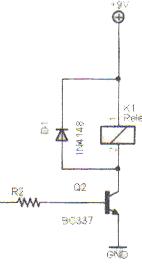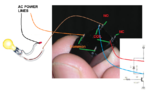myru28
Member level 1
I'm having trouble with making a relay to work and as the one I have doesn't have a datasheet I cannot work much on it
The relay is the one shown here: https://www.electan.com/product_thumb.php?img=images/P1010055.JPG&w=200&h=150 and I think that either 9V and (0 or 5V) should go to the pins that are left most, and depending on if I'm applying 0 or 5 Volts the pins at the right should be 9 for a value and 0 for the other, the other ping being exactly the opposite as the one at its side. Pins that are not seen and vertical to those ones should have the same value as that pin (I'll call the pin and the one it's vertical partners).
But in practice, I get 9 V for the right most pin and 0 for its partner and 0 for the others wether there's 0 or 5 V on entrance. So I guess I may be doing something wrong, and it's more worth asking than keeping on experimenting.
I also bought the relay sure that 5 V was the quantity needed to change the pin that gives the output on the delay, but maybe I was mistake, I also don't get a clue what those 55 Ω are about, if they have anything to do with the problem.
Thanks.
The relay is the one shown here: https://www.electan.com/product_thumb.php?img=images/P1010055.JPG&w=200&h=150 and I think that either 9V and (0 or 5V) should go to the pins that are left most, and depending on if I'm applying 0 or 5 Volts the pins at the right should be 9 for a value and 0 for the other, the other ping being exactly the opposite as the one at its side. Pins that are not seen and vertical to those ones should have the same value as that pin (I'll call the pin and the one it's vertical partners).
But in practice, I get 9 V for the right most pin and 0 for its partner and 0 for the others wether there's 0 or 5 V on entrance. So I guess I may be doing something wrong, and it's more worth asking than keeping on experimenting.
I also bought the relay sure that 5 V was the quantity needed to change the pin that gives the output on the delay, but maybe I was mistake, I also don't get a clue what those 55 Ω are about, if they have anything to do with the problem.
Thanks.




